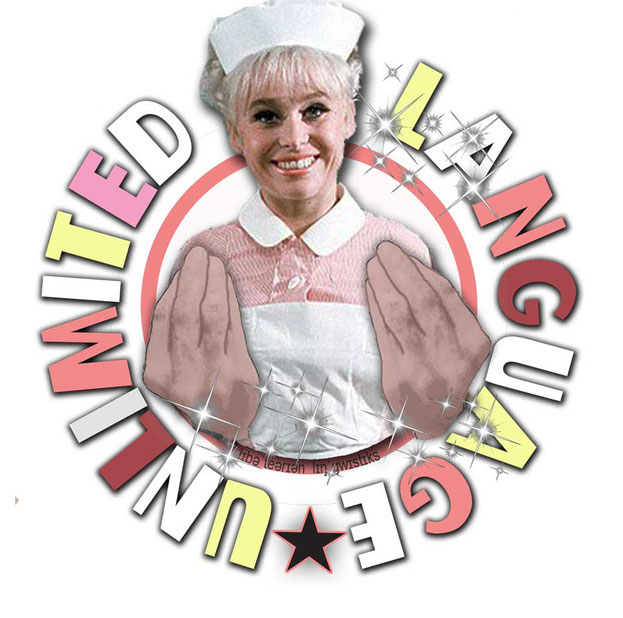Level B1-C2. Intermediate to Advanced

INTRODUCTION QUESTIONS
How would you define Public Relations?
Is there any difference between Public Relations and Propaganda?
How are Public Relations carried out?
Who do you think invented Public Relations?
SELLING THE WAR
READ THE FOLLOWING:
… the first modern government propaganda operation … was under the Woodrow Wilson Administration. Woodrow Wilson was elected President in 1916 on the platform "Peace Without Victory." That was right in the middle of the World War I. The population was extremely pacifistic and saw no reason to become involved in a European war. The Wilson administration was actually committed to war and had to do something about it. They established a government propaganda commission, called the Creel Commission, which succeeded, within six months, in turning a pacifist population into a hysterical, war-mongering population which wanted to destroy everything German, tear the Germans limb from limb, go to war and save the world. That was a major achievement, and it led to a further achievement. Right at that time and after the war the same techniques were used to whip up a hysterical Red Scare, as it was called, which succeeded pretty much in destroying unions and eliminating such dangerous problems as freedom of the press and freedom of political thought. There was very strong support from the media, from the business establishment, which in fact organized, pushed much of this work, and it was, in general, a great success.
SOURCE: Noam Chomsky Media Control - The Spectacular Achievements of Propaganda
KEY VOCABULARY
to involve (to include in) coinvolgere
to commit to (to be dedicated to) promettere di fare / impegnarsi a fare
to succeed in (manage to do) riuscire a
to tear limb from limb (damage / rip) fare a pezzi
war-mongering (advocating war) guerrafondaia
scare (threat) minaccia
further (more extended) ulteriore
achievement (accomplishment) risultato
press (media) stampa
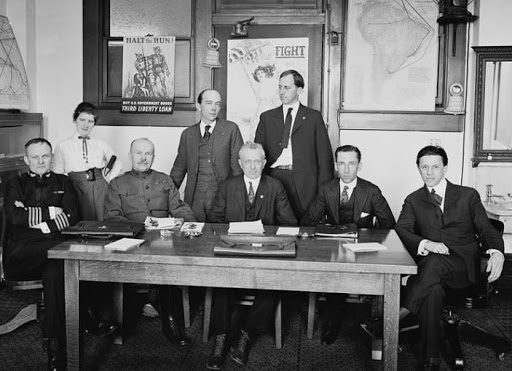
............The United States pioneered the public relations industry. Its commitment was "to control the public mind," as its leaders put it. They learned a lot from the successes of the Creel Commission and the successes in creating the Red Scare and its aftermath. The public relations industry underwent a huge expansion at that time. It succeeded for some time in creating almost total subordination of the public to business rule through the 1920s. This was so extreme that Congressional committees began to investigate it as we moved into the 1930s. That’s where a lot of our information about it comes from.
Download the full book here:
CONVINCING PEOPLE TO GO TO WAR
How do you think they managed to convince the U.S. population to change in such a short space of time?
Which means of communication did they use to convince people?
How do you think news was transmitted in those times?
How much do you think was false news, or is that a modern phenomena?
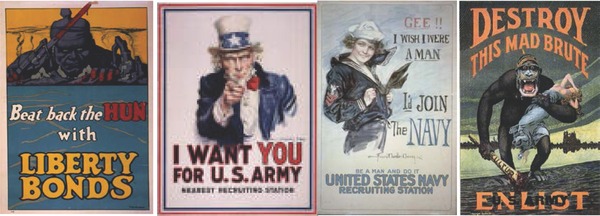
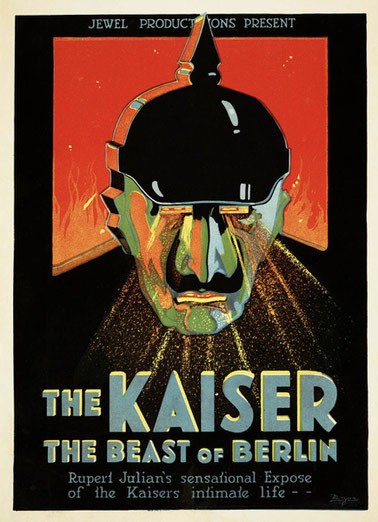
How would you describe these graphics?
What is a bond?
What do you think Liberty Bonds are?
What was the Red Scare?

WHO WERE THE 'FOUR MINUTE MEN'?
The Four Minute Men were 'voluntary' speakers recruited to help promote America's involvement in World War I. Their aim was also to sell Liberty Bonds to generate money to pay for the war and arouse the patriotic passion of the audience. All in all, 75,000 Four Minute Men gave about one million speeches at schools, churches, clubs and particularly in movie theaters (cinemas). They spoke in the four-minute break between film reels - hence the name.
Their speeches and rhetoric techniques were directed by the Creel Committee's Committee on Public Information, CPI, through bulletins which provided the instruction and inspirational material for speeches.
Bulletin No. 39 is an examples of World War I propaganda, with the title Forth Liberty Loan and is one of those instruction manuals for the Four Minute Men used in 1918.
The CPI taught the volunteers to become good speakers.
As guidance, the CPI had divided the so called Four Minute Speech into four parts:
1. An opening to grab the attention and interest of the audience.
2. A body to present facts that will appeal to the rationality of the audience.
3. An emotional appeal to stir sentiment and make the audience want to act, want to buy Bonds.
4. An ending that summarizes the speech and appeals to the will of the audience to act.
KEY VOCABULARY
to recruit (to give a job to) assumere
involvement (to be part of) coinvolgimento
bonds (financial promissory note) obbligazione
to arouse (to stimulate) svegliare, stimolare
hence (therefore) perciò
speech (talks) discorso
HOLLYWOOD'S ROLE IN MILITARY PROPAGANDA
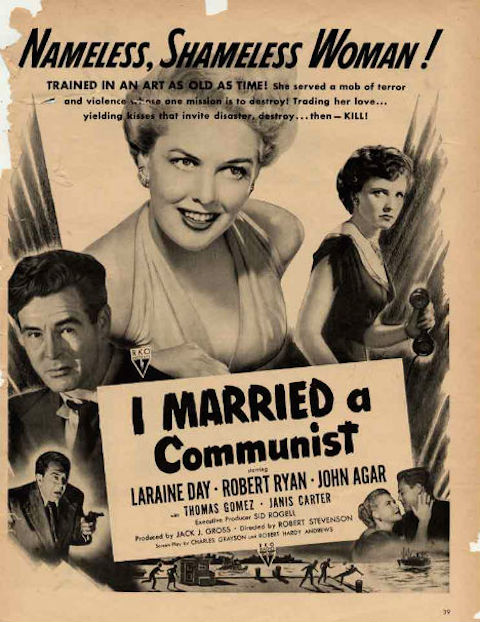
The U.S. Office of War Information had a unit dedicated exclusively to Hollywood, the Bureau of Motion Pictures, Mirlees says.
Between 1942 and 1945, the Bureau reviewed 1,652 scripts, revising or discarding anything that portrayed the U.S. unfavourably, including any material that made Americans seem "oblivious to the war or anti-war."
"The head of the Office of War Information was Elmer Davis who said, 'The easiest way to inject a propaganda idea into most people's minds is to let it go through the medium of an entertainment picture when they do not realize they're being propagandized,'" Mirrlees said.
Hollywood had received its marching orders from the military, and during the war, he says, "people who'd been trained to sell soap, cereal and home appliances were now being enlisted by the state to sell war to the American public."
Historians and other academics point out that arrangement was the beginning of a uniquely American mission that continues even now. Relationships forged between U.S. government agencies and Hollywood during the Second World War and Cold War shaped how stories about the military are still being told.
"Many of [Hollywood's] films are embedded in the American military. And made to glorify the American military," Mirrlees said. "No country in the world churns out as many images of itself as the military hero… like the United States does. That is a unique cultural phenomenon."
(From https://www.cbc.ca/radio/ideas/how-hollywood-became-the-unofficial-propaganda-arm-of-the-u-s-military-1.5560575 )
KEY VOCABULARY
script (trascription) copione
oblivious (unaware) inconsapevole
entertainment (leisure) intrattenimento
forged (created) forgiate
to churn out (produce) produrre in serie
How did America's approach to convincing the population to join the war differ from the approach by Mussolini, Hitler, etc?
What role does technology play in propaganda?
If the public relations industry, advertisers and the media did the propaganda for the war, who would benefit?
Which sectors of the economy benefited from World Wars I and II?
THIS WEEK'S HOMEWORK
Listen to this incredible audiobook. You can download the text below too. If you find it difficult use the text at the same time.
AUDIOBOOK: War is a Racket by Major General Smedley D. Butler

Free video tutorial!
Check out our Zak Washington English learners' instruction video (released every two weeks on Youtube):
